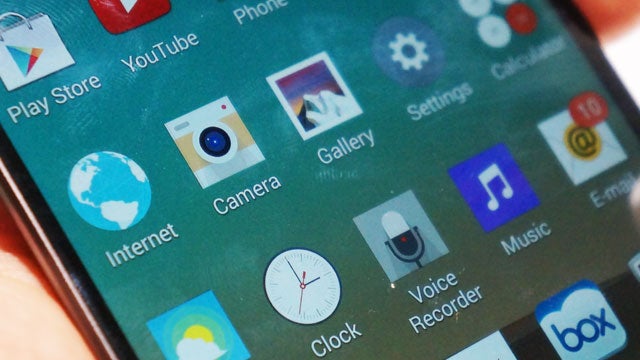LG G3 QHD Screen: Why resolution shouldn’t be a priority anymore

Do we need more pixels?
OPINION Have we reached ‘peak resolution’ on mobile phones? After the LG G3, Andrew Williams is convinced we have.
Screen resolution is one of the most important elements of the LG G3. It’s the first phone to have a QHD screen, almost certainly higher-res than the TV in your house.
To be a little more exact, the LG G3 has a screen whose diagonal measures 5.5 inches, and it fits in more than 3.5 million pixels. That’s over 1.5 times the pixels in a 1080p TV, and more than half a million more pixels than the iPad Air.
As technologically impressive has the hunt for more pixels is in phones, it is not going to lead to a fundamentally improved experience. It is rather a symptom of a kind of mania, the same kind that saw the megapixel war in phones that lead to a 13-megapixel phone all the way back in 2008.
Is it progress? Yes, but it’s not the sort of progress you should be too suckered in by.
SEE ALSO: How the LG G3 laser AG camera focus works
Pixels vs megapixels
Just as there was more to a phone camera than resolution back in 2008, there is more to a good phone screen than resolution or pixel density today. And if you’re after a new phone today, there are other things to be mindful of.
The Imaging Science Foundation itself says on image quality “the fourth and least of our four key parameters is resolution.” The ISF was not of course talking directly about phone screens, but the same applies, especially now that phone screens already have more pixels than they know what to do with.
On the side of image quality, you should consider contrast and colour accuracy. These are yet to be latched-onto by phone makers as things to shout about in a phone, but they are incredibly important parts of producing a good picture.
So why haven’t the measurements for top phones’ colour and contrast made their way into the marketing materials?
The race to 0 cd/m2
They haven’t needed to. We’ve seen such increases in screen resolution over the past four years that it alone has been enough to represent the sum of screen innovations from generation to generation. And it has fallen to people like us to complain or congratulate about the rest.
LG doesn’t deserve too much criticism for the quality of its recent displays, but every IPS LCD screen we’ve seen still has significant limitations when it comes to black level. It’s down to the kind of backlight used in phones.
LED lights fire across the screen, providing illumination for the whole of the display, rather than a particular, small part of it. This structure is why plasma TVs still offer better image quality than almost any LCD TV on the market – and plasmas are hardly even made any more.
Thanks to an LCD’s backlight, getting blacks that look black in dimmed lighting is extremely difficult. You can try it with your own LCD phone. Turn the lights off, get a mostly black image on-screen and give your phone a twist around. You should see the blacks turn grey, at least at an angle if not at every angles.
You don’t get this sort of greying effect with an OLED screen like the Galaxy S5‘s, and it has a massive effect on things like dynamic range and how colours appear. In short, most LCD-based phones look quite crappy in a darkened room.
Does this matter? Perhaps not to everyone, but working on improving the dynamic range of LCD screens in adverse conditions is a more worthwhile upgrade than continually cramming more and more pixels into ever smaller spaces.
We see this same effect in TVs too, as almost every TV maker has shelved its development of OLED screens in order to work on cranking out sub-£1000 4K TVs that will doubtless get many more people dipping hands into pockets. Higher resolution is the most saleable aspect of screens at present, but at this point in the development it’s one of the least important.
Sadly, the only way TV makers will be forced to switch their priorities is if public opinion on such things changes. And as much as we try to make this happen with our TV reviews, we can’t do it on our own.
Next, read our LG G3 vs G2 comparison


